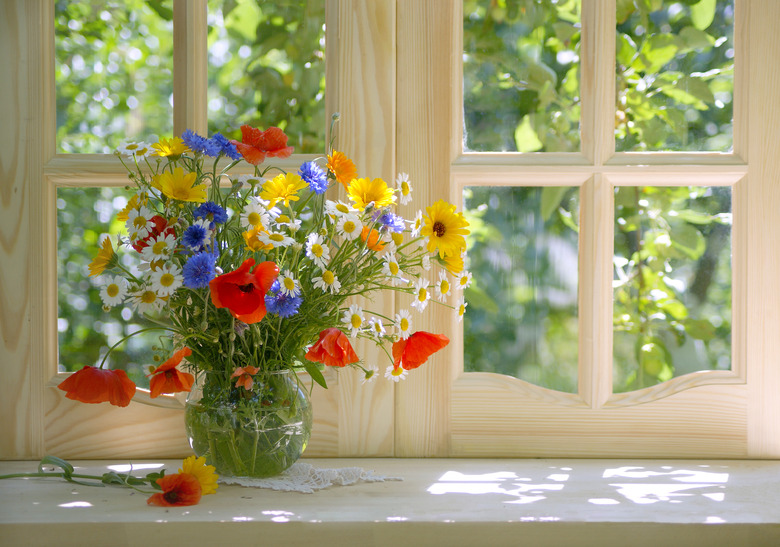How Does Bleach Help Cut Flowers?
We may receive a commission on purchases made from links.
If you've ever used bleach to disinfect your home or whiten your whites, you know how strong the chemical is. So adding it to beautiful, delicate cut flowers can seem like the wrong move. However, adding bleach to the water is one of many tricks to make cut flowers last so you can enjoy them longer. Knowing when and how to use bleach in flowers can maximize your results.
Why Bleach Helps Cut Flowers
Why Bleach Helps Cut Flowers
The water in your vase of cut flowers is the perfect spot for all types of microorganisms to grow. The flower stems, leaves, and other debris can encourage bacterial growth and water cloudiness as they deteriorate. All those microorganisms can block the flower stems, cutting down on how much water they can absorb. Without nutrients from the water, the flowers tend to wilt faster.
Bleach added to the vase water can help to control those microorganisms. With less bacteria in the vase, the flower stems can easily absorb the water they need to stay perky and bright for longer. Bleach in flowers can also keep the water cleaner, which makes the vase of flowers look prettier.
Preparing the Flowers and Vase
Preparing the Flowers and Vase
Bleach is effective at killing bacteria and boosting your cut flowers, but you can also maximize that effect with proper preparation. Store the flowers in a cool spot until you're ready to put them in a vase. Warm temperatures while you store or display cut flowers can make them deteriorate faster.
Start with a clean vase that you wash in warm, soapy water to get rid of any bacteria or residue inside it. Rinse it well to remove the soap suds. Choose a vase with a large-enough opening to hold the flowers in a pretty shape without squeezing them together too much. If the flowers come from the florist in a vase, it's still a good idea to clean it and put fresh water in it.
Flower prep starts with removing the leaves below the water line, as they can produce additional bacteria as they rot. Using pruning shears, hold the flowers in water and trim about 1 to 2 inches off the bottom of each stem, cutting at an angle. The pruning shears prevent crushing the stems to allow them to take up as much water as possible. Cutting the stems at an angle keeps them from pressing against the bottom of the vase, again making it easier for them to absorb water.
Adding Bleach to Flower Water
Adding Bleach to Flower Water
You don't need much bleach to keep the bacterial growth under control. Add 1/4 teaspoon of bleach to 1 quart of water. Stir the water to mix the bleach throughout. Then, you're ready to arrange your freshly cut flowers in the decorative vase and display them.
Refilling the Vase
Refilling the Vase
Keep an eye on the water level in your vase to know when you need to refill it. Add more water when the level gets low. You might also need to dump the water and clean the vase if it gets gunky and smelly. Retrim the stems and make a new bleach and water solution to put in the vase.
